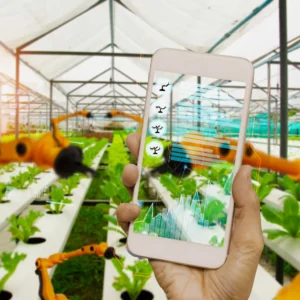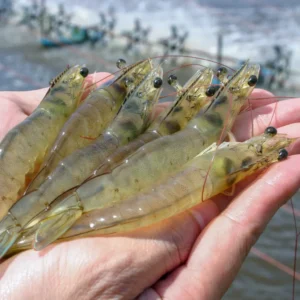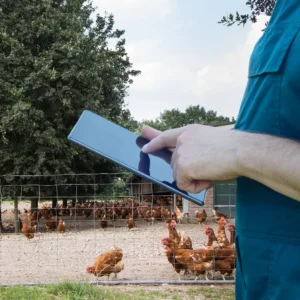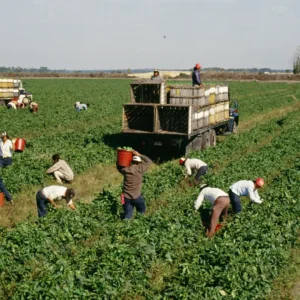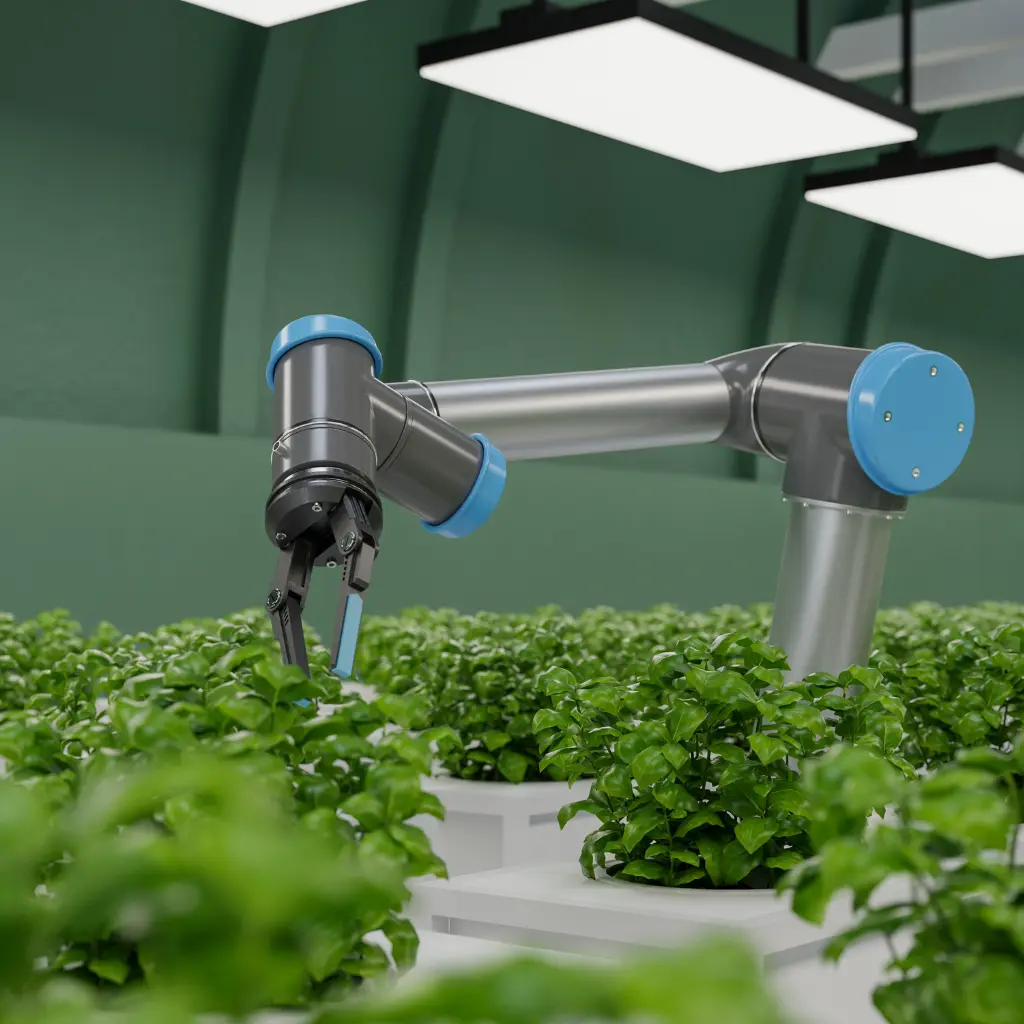
Revolutionizing Sustainable Agriculture
AI in Smart Greenhouses
Harnessing the potential of artificial intelligence (AI) in greenhouse farming can catapult the agriculture sector to unprecedented heights of efficiency and productivity.
This article delves into the innovative realm of AI in intelligent greenhouses, exploring novel concepts like AI-driven climate control, automated plant health monitoring and intelligent lighting systems.
Uncover how AI-driven growth prediction, along with real-time greenhouse analytics, empowers farmers, boosts yield quality and revolutionizes the agricultural paradigm.
Creating the Perfect Climate: AI-Driven Controls
Creating the perfect climate within buildings is another leap towards sustainability through AI-driven controls. Deploying artificial intelligence in HVAC systems for intelligent buildings is a cutting-edge approach that goes beyond basic automation.
AI serves as the “brain” of the system, learning from data inputs, predicting future needs, and optimizing energy usage continually. These AI-driven controls combine monitoring, predictive analytics, and automatic temperature, humidity, and air quality adjustments, offering increased energy efficiency and facility management.
Thus, perfecting the climate through AI drives utility costs down and improves occupant comfort and productivity, resulting in a healthier and sustainable environment.
Vigilant Greenhouses: Real-time Plant Health Checks with AI
Imagine never having to worry about the health of your plants again! With cutting-edge AI and IoT technology, greenhouses can monitor plant health in real-time, ensuring that your precious flora is always thriving. Say goodbye to guesswork and hello to the exciting world of intelligent agriculture.
Technology can provide a more efficient approach rather than depending on manual reviews that are time-consuming and prone to human error. Sensors placed throughout these greenhouses capture temperature, humidity, pH, and light intensity data, amongst others.
This data is processed and analyzed to give a clear picture of plant health. Any abnormalities are detected in real-time, allowing treatments to be administered immediately, thus preventing any more significant issues.
This means healthier plants, increased production, minimized waste, and higher farmer profits. Thus, modern greenhouses demonstrate how technology can revolutionize traditional agriculture.
Let There Be Optimal Light: AI in Plant Illumination
Modern agricultural practice is incorporating AI to optimize plant illumination for indoor farming. By collecting data on how different types of plants react to varying levels of light, AI algorithms can adjust the lighting accordingly to ensure the optimal growth condition.
The application of AI extends even further as it can change the wavelength and intensity of light to boost photosynthesis and trigger specific growth responses.
This innovative technology maximizes food production efficiency, conserves energy, and enables year-round cultivation regardless of external weather conditions, revealing a promising future for sustainable agriculture.
Predicting Produce: How AI Foresees Growth Patterns in Greenhouses
AI technology can accurately predict crop growth patterns and help maximize yield and reduce agricultural waste. By collecting and analyzing data on soil conditions, rainfall, temperature, and sunlight, AI algorithms can predict the optimum conditions for the growth of specific crops.
Furthermore, AI systems can use past data to foresee potential pests or diseases that could hamper growth, allowing farmers to take necessary preventative measures. These predictions can help farmers plan their planting and harvesting schedules more efficiently, contributing to a more sustainable and profitable farming practice.
In this way, AI is paving the way towards a new era of precision agriculture.
Data-Driven Decisions with AI: The Smart Greenhouse's Approach
Greenhouses of the modern era use data-driven decisions to optimize their functionality and sustainability. The intelligent greenhouse approach integrates technology to capture real-time temperature, humidity, light exposure, and soil health data.
This data is analyzed and utilized to make informed decisions on resource allocation, planting schedules and pest management. In essence, data aids in maximizing productivity, reducing waste and enhancing the quality of the produce.
Furthermore, predictive models can be created from the accumulated data, allowing greenhouse managers to forecast possible issues and make proactive adjustments. This emergent trend of data-driven decisions is driving the future of sustainable agriculture.
Boosting Crop Yields Indoors: Cultivating with AI in Smart Greenhouse
AI technology is rapidly transforming the field of indoor farming and boosting crop yields. AI monitors and regulates the optimal conditions for thriving plant growth through advanced algorithms and machine learning.
It analyses variables like temperature, light intensity, humidity and nutrient levels and adjusts them accordingly. This eliminates painstaking manual labour, reduces the risk of human error, and increases crop productivity significantly.
Additionally, AI systems can predict future growth patterns and potential threats or diseases, allowing farmers to treat them proactively. Hence, cultivating with AI opens up new opportunities for indoor farming to achieve sustainable food production.
Intelligent Interiors: The AI-Driven Smart Greenhouse
In the realm of tech-driven horticulture, intelligent interiors mark a revolution. Innovative interiors, such as tech-driven greenhouses, are designed to create optimal conditions for plant growth by automatically regulating temperature, light, and humidity.
This includes sensor-based irrigation systems that efficiently conserve water while ensuring the plants get what they need. In addition, advanced tech features like AI algorithms can predict the plant’s needs, allowing for adjustments ahead of time, thus enhancing yields.
Moreover, intelligent interiors can also use renewable energy sources, modelling sustainable practices. Through this, tech-driven greenhouses make agriculture greener, smarter, and more sustainable.
Harmonizing Humidity, Temperature, and Growth with AI
Integrating AI into agriculture has opened our eyes to its enormous potential. By harmonizing humidity, temperature, and growth using AI, farmers can now monitor and maintain the optimal growing conditions for their crops.
AI-based systems can collect and analyze vast amounts of data from diverse sources, such as weather forecasts, soil conditions, and historical crop performance data, to make precise predictions about crop growth rates.
It can then adjust irrigation and temperature control systems to create the perfect environment for each crop type. This results in better yields, less waste, and more sustainable farming practices. These advancements are revolutionizing the agriculture industry.
Future Farms: The Greenhouse Revolution with AI
Fueled by the greenhouse revolution and AI, future farms are forging a new path in the agriculture industry. AI technology has taken centre stage in transforming old greenhouse farming techniques into more efficient and productive systems. Leveraged with machine learning, AI can monitor and control temperature, light, humidity, and nutrition, creating optimal conditions for plant growth.
Imagine a world where farming is not only sustainable but also secure. Thanks to early disease and pest detection, combined with AI-driven predictive analytics, farmers can make smarter decisions and improve crop yield quality and cycles.
This futuristic approach to agriculture is the key to ensuring food security amidst climate crises and a growing global population. It’s an exciting time for farming, and AI-powered technology is leading the way!
Blooming in Bytes: Digital Transformations in Greenhouses
The digital technology revolution is also reshaping the world of agriculture, specifically in how we manage greenhouses. Adopting digital transformations in greenhouses has further streamlined and optimized farming processes.
Sensors, artificial intelligence (AI), and data analytics have become cornerstone technologies, enabling people to monitor crop health, regulate temperature and humidity levels, and predict harvest yields accurately. For instance, a crop sensor can detect a pest problem, and AI technology can suggest the best corrective action.
Integrating digital tools within greenhouses turns agriculture into a precision-based industry, delivering higher yields and reducing environmental impact.
Conclusion
The integration of AI in intelligent greenhouses heralds a transformative era for agriculture. Offering precise controls, predictive analytics, and real-time monitoring, AI enhances productivity while championing sustainability.
As challenges of climate change and food security intensify, AI-equipped greenhouses promise a resilient and optimized future for farming, merging technological prowess with natural processes. This fusion ensures bumper yields and positions agriculture at the forefront of sustainable innovation.
Related Articles
- AI in Smart Agriculture – Precision Farming
- AI in Modern Aquaculture – Underwater Harvest
- AI in Animal Farming – Tech Meets Livestock
- AI in Sustainable Agriculture – Green Gains
- AI in Agricultural Supply Chain – From Farm to Table
- AI in Agricultural Biotechnology – Bespoke Crops
- AI in Agri-Finance and Insurance – Safeguarding the Harvest
- AI in Farming Tools and Machinery – Equipped for the Future
- The AI Urban Farming Revolution – Cultivating Cities
- AI in Agricultural Automation – Robotic Revolution
- AI in Post-Harvest Care – Beyond the Harvest
- The Surge of Agri-Tech AI Platforms – Digital Farming
- AI in Combatting Crop Diseases – Healthy Harvests
- AI in Boosting Organic Farming – Natural Nurturing
- AI in Agricultural Supply Chain Management
- AI in Precision Agriculture: Farms for a Sustainable Future
- AI in Crop Forecasting and Analysis: New Agricultural Era
- The Role of AI in Agricultural Robotics: Revolutionizing Farming
Forbes Articles related to AI usage in the Agriculture Sector:


